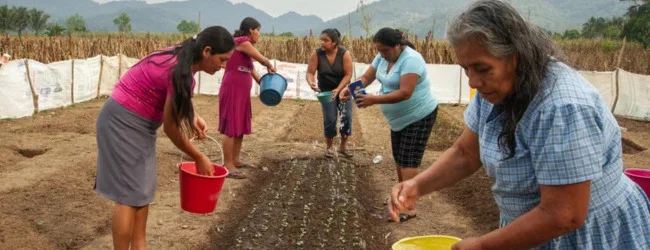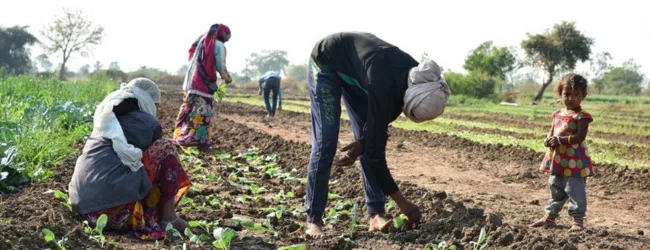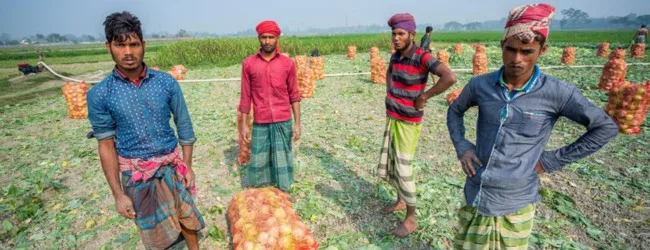Table of contents
- What Is Cooperative Farming?
- Types of Cooperative Farming in India
- Advantages of Cooperative Farming
- Techniques and Practices in Cooperative Farming
- Step-by-Step Guide: How to Start a Cooperative Farm in India
- Role of NABARD and Other Financial Institutions
- Real-Life Examples of Cooperative Farming in India
- Government Initiatives Supporting Cooperative Farming
- Challenges in Cooperative Farming
- Potential of Cooperative Farming in India
- Conclusion
- Frequently Asked Questions (FAQs)
Cooperative farming in India is transforming the agricultural landscape by enabling small and marginal farmers to pool resources, share risks, and collectively access markets, technology, and credit. With over 86% of Indian farmers owning less than 2 hectares of land, cooperative farming offers a sustainable model to boost productivity, reduce costs, and enhance livelihoods.
What Is Cooperative Farming?

Cooperative farming is a system where farmers voluntarily come together to pool their land, labour, capital, and resources to carry out agricultural activities collectively. While ownership of land remains with individual farmers, operations like sowing, harvesting, and marketing are done jointly, allowing members to benefit from economies of scale.
Types of Cooperative Farming in India
- Collective Farming: Farmers pool their land and resources, and cultivation is done jointly.
- Joint Farming: Land is pooled, but each farmer cultivates their plot individually.
- Tenant Farming: Farmers lease land collectively and share profits based on contribution.
- Cooperative Better Farming: Farmers retain individual ownership but collaborate for services like irrigation, machinery, and marketing.
Advantages of Cooperative Farming

- Economies of Scale: Bulk purchasing of inputs reduces costs.
- Access to Credit: Easier to obtain loans through cooperative societies.
- Improved Market Access: Collective marketing leads to better pricing.
- Risk Sharing: Losses are distributed among members, reducing individual risk.
- Knowledge Sharing: Farmers benefit from shared expertise and training.
💡 Pro Tip: If you want to start a Business but have too many doubts, connect with a Business expert from Boss Wallah for guidance – Check Out
Techniques and Practices in Cooperative Farming

- Shared Machinery: Use of tractors, harvesters, and other equipment collectively.
- Collective Procurement: Bulk buying of seeds, fertilisers, and pesticides.
- Joint Marketing: Selling produce collectively to negotiate better prices.
- Integrated Farming: Combining crop cultivation with livestock, poultry, or fishery.
- Sustainable Practices: Adoption of organic farming and water conservation techniques.
Step-by-Step Guide: How to Start a Cooperative Farm in India
Add a practical section outlining:
- Forming a group of interested farmers
- Registering a cooperative society (under the Cooperative Societies Act, 1912 or relevant state act)
- Drafting bylaws and electing a managing committee
- Opening a bank account and applying for PAN/GST
- Availing subsidies, loans (e.g., from NABARD), and training
Role of NABARD and Other Financial Institutions
Explain how institutions like:
- NABARD (National Bank for Agriculture and Rural Development)
- NCDC (National Cooperative Development Corporation)
Support cooperative farming through: - Credit guarantees
- Low-interest loans
- Capacity-building programs
Real-Life Examples of Cooperative Farming in India
- Amul Dairy Cooperative: Established in 1946, Amul has over 3.6 million member farmers and is the largest dairy cooperative globally.
- Comfed (Sudha Dairy), Bihar: Collects 40 lakh litres of milk daily and has a turnover of ₹1,500 crore.
- Karnataka Milk Federation (Nandini): Second-largest milk cooperative in India, supporting thousands of dairy farmers.
- HOPCOMS, Karnataka: Facilitates direct marketing of horticultural produce, benefiting over 12,000 farmers.
ALSO READ | Strip Farming: What is it, Purpose, Techniques, Setup Cost & More
Government Initiatives Supporting Cooperative Farming
- Mukhyamantri Krishak Samridhi Yojana (Uttar Pradesh): Aims to boost income and self-reliance among small and marginal farmers through cooperative banks.
- Policy for PACS Liquidation and Registration: The Central government plans to establish 2 lakh new Primary Agricultural Credit Societies by 2029.
- Power Subsidy Inclusion: The Karnataka High Court ruled that farmer societies are eligible for agricultural power subsidies.
Challenges in Cooperative Farming

- Lack of Awareness: Many farmers are unaware of the benefits of cooperative farming.
- Management Issues: Inefficient management can lead to losses.
- Limited Access to Technology: Small cooperatives may struggle to adopt modern farming techniques.
- Financial Constraints: Initial capital investment can be a barrier.
ALSO READ | Traditional Farming: Methods, Ancient Practices in India, Tools & More
Potential of Cooperative Farming in India
With proper support and awareness, cooperative farming can:
- Increase Productivity: By adopting modern techniques and shared resources.
- Enhance Income: Through better market access and reduced costs.
- Promote Sustainable Agriculture: By encouraging eco-friendly practices.
- Empower Small Farmers: By providing them with a collective voice and bargaining power.
Need Expert Guidance?
Starting a business can be challenging, but you don’t have to do it alone! At Boss Wallah, our 2,000+ business experts are ready to provide valuable insights and guidance. Whether you need help with marketing, finance, sourcing, or any other area of any business, our business experts are here to help you succeed
Confused about Which Business to Start?
Want to start your own business but unsure which one to choose? Explore Boss Wallah, where you’ll find 500+ courses by successful business owners, featuring practical, step-by-step guides on starting and growing various businesses.
Find your perfect business idea today
Conclusion
Cooperative farming holds immense potential to revolutionise agriculture in India by empowering small and marginal farmers, enhancing productivity, and ensuring sustainable livelihoods. With supportive policies, awareness campaigns, and effective management, cooperative farming can become a cornerstone of India’s agricultural growth.
Frequently Asked Questions (FAQs)
1. What is cooperative farming?
It’s a system where farmers pool resources to conduct agricultural activities collectively.
2. How does cooperative farming benefit small farmers?
It reduces costs, improves market access, and shares risks among members.
3. Is land ownership retained in cooperative farming?
Yes, individual farmers retain ownership of their land.
4. What are PACS?
Primary Agricultural Credit Societies that provide credit and other services to farmers.
5. Can cooperative farming be practised in all types of agriculture?
Yes, it can be applied to various agricultural activities, including dairy, horticulture, and crop cultivation.
6. Are there government schemes supporting cooperative farming?
Yes, several schemes at both the central and state levels support cooperative farming.
7. What challenges do cooperative farms face?
Challenges include management issues, lack of awareness, and financial constraints.
8. How can one join a cooperative farming society?
By applying to existing societies or forming a new one with other interested farmers.
9. Is cooperative farming profitable?
Yes, when managed effectively, it can lead to increased profits for members.
10. Where can I get more information on cooperative farming?
Government agricultural departments and cooperative societies provide resources and guidance.


